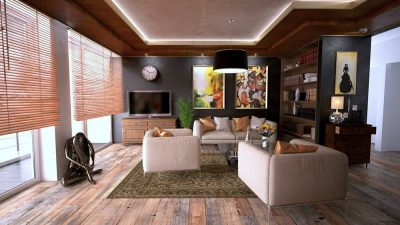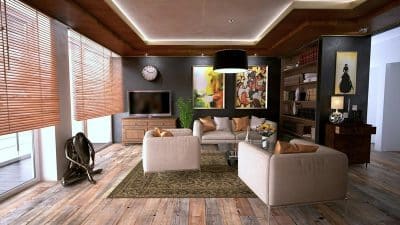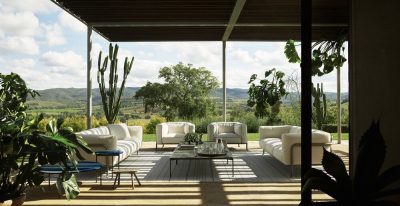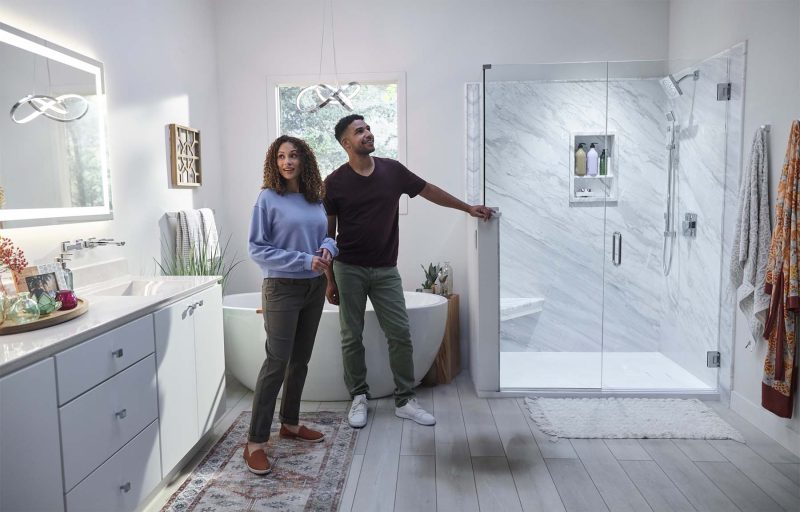
A bathroom remodel is an exciting endeavor that allows you to enhance the aesthetics, functionality, and comfort of one of the most frequently used spaces in your home. Whether you’re looking to update a tired and outdated bathroom or create a luxurious spa-like retreat, careful planning and attention to detail are key to achieving your desired results. In this comprehensive guide, we’ll explore everything you need to know about bathroom remodel, from planning and design considerations to materials, fixtures, and budgeting tips.
Part 1: Planning Your Bathroom Remodel
Assess Your Needs and Priorities:
Before diving into a bathroom remodel, take the time to assess your needs, priorities, and goals for the project. Consider factors such as:
Functionality: Determine how you use the space and what features are essential for your daily routine.
Style Preferences: Identify your design preferences, whether you prefer a modern, traditional, or transitional aesthetic.
Budget: Establish a realistic budget for your remodel and prioritize investments based on your needs and preferences.
Timeline: Consider the timeline for your project and any deadlines or special considerations that may affect the renovation process.
Gather Inspiration:
Browse design magazines, websites, and social media platforms such as Pinterest and Instagram to gather inspiration and ideas for your bathroom remodel. Create a mood board or digital folder to collect images of bathrooms, fixtures, finishes, and design elements that resonate with your style and vision.
Set a Realistic Budget:
Establishing a realistic budget is essential for guiding your bathroom remodel and ensuring that you stay within your financial means. Consider all aspects of the project, including materials, labor, permits, and unexpected expenses. Be sure to factor in a contingency fund of 10-20% of your total budget to cover any unforeseen costs that may arise during the renovation process.
Part 2: Design Considerations
Layout and Space Planning:
Evaluate the existing layout and functionality of your bathroom and consider if any changes or improvements are needed. Determine the optimal placement of fixtures, storage solutions, and accessories to maximize space and efficiency. Work with a professional designer or architect if necessary to create a layout that meets your needs and enhances the flow of the space.
Fixture Selection:
Selecting the right fixtures is crucial for achieving the desired look and functionality in your remodeled bathroom. Consider factors such as:
Vanity: Choose a vanity that complements your design aesthetic and provides ample storage and countertop space.
Shower and Tub: Select a shower and/or bathtub that suits your lifestyle and preferences, whether you prefer a spacious walk-in shower, a luxurious soaking tub, or a combination of both.
Toilet: Choose a toilet that is efficient, comfortable, and matches the overall style of your bathroom.
Sink and Faucets: Select sinks and faucets that are both stylish and functional, considering factors such as size, shape, finish, and water-saving features.
Lighting and Ventilation:
Proper lighting and ventilation are essential for creating a comfortable and functional bathroom environment. Incorporate a combination of ambient, task, and accent lighting to illuminate the space effectively. Install a ventilation fan to remove excess moisture and prevent mold and mildew growth.
Part 3: Materials and Finishes
Flooring:
Choose durable and water-resistant flooring materials that can withstand the moisture and humidity present in bathrooms. Popular options include porcelain tile, ceramic tile, natural stone, vinyl plank, and waterproof laminate.
Walls and Backsplashes:
Select wall and backsplash materials that are both stylish and easy to clean. Consider options such as ceramic tile, subway tile, glass tile, beadboard, or waterproof wallpaper.
Countertops:
Choose countertops that are durable, stain-resistant, and easy to maintain. Popular options include granite, marble, quartz, solid surface, and laminate.
Cabinetry and Storage:
Invest in high-quality cabinetry and storage solutions that maximize space and functionality in your bathroom. Consider options such as custom-built vanities, medicine cabinets, floating shelves, and built-in niches.
Part 4: Budgeting and Cost-Saving Tips
Prioritize Investments:
Allocate your budget wisely by prioritizing investments in areas that have the most significant impact on the overall look and functionality of your bathroom. Focus on quality fixtures, materials, and finishes that will stand the test of time and enhance the value of your home.
DIY vs. Professional Installation:
Consider tackling certain aspects of the remodel yourself, such as painting, demolition, or simple tasks like installing hardware or accessories, to save on labor costs. However, for more complex or technical tasks such as plumbing, electrical work, or tile installation, it’s best to hire professional contractors to ensure quality results and compliance with building codes.
Shop Smart:
Shop around for the best deals on materials, fixtures, and accessories by visiting home improvement stores, online retailers, and local suppliers. Look for sales, discounts, and clearance items to stretch your budget further without compromising on quality.
Plan for Contingencies:
Set aside a contingency fund to cover unexpected expenses that may arise during the renovation process, such as structural repairs, plumbing issues, or design changes. Having a buffer in your budget will give you peace of mind and prevent financial stress if unforeseen challenges arise.
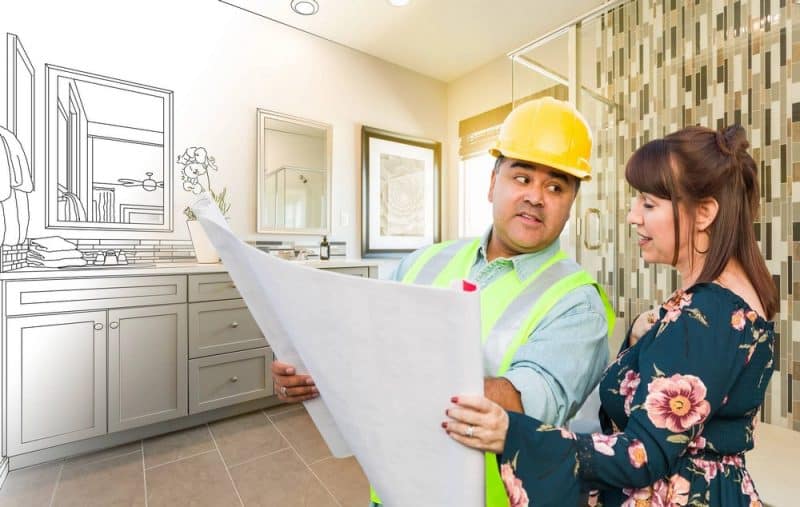
Trends in Bathroom Remodeling
Bathroom remodeling continues to evolve, with new trends emerging each year that reflect changing tastes, technological advancements, and a desire for enhanced comfort and convenience. Whether you’re planning a complete overhaul or a minor update, staying abreast of the latest trends can help you create a bathroom that is both stylish and functional. In this article, we’ll explore some of the top trends in bathroom remodeling that are shaping the design landscape in 2024 and beyond.
Nature-Inspired Materials and Finishes:
One of the prevailing trends in bathroom remodeling is the use of nature-inspired materials and finishes to create a serene and organic atmosphere. Natural stone, such as marble, travertine, and limestone, continues to be a popular choice for countertops, flooring, and shower surrounds, adding elegance and sophistication to the space. Additionally, wood accents, such as reclaimed wood vanities or statement wall panels, bring warmth and texture to the bathroom, creating a relaxing and inviting environment.
Monochrome Color Schemes:
Monochrome color schemes are gaining popularity in bathroom design, with homeowners opting for cohesive palettes that create a sense of harmony and visual continuity. Shades of white, gray, and taupe are commonly used to achieve a clean, minimalist look, while black accents, such as matte fixtures or hardware, add contrast and drama. Monochrome bathrooms are timeless and versatile, allowing for easy customization with accessories and decor.
Smart Technology Integration:
The integration of smart technology has become increasingly prevalent in bathroom remodeling, offering enhanced comfort, convenience, and efficiency. Smart toilets with features such as bidet functionality, heated seats, and automatic flushing are becoming more common, providing a luxurious and hygienic bathroom experience. Additionally, smart faucets, shower systems, and lighting can be controlled remotely via smartphone apps, allowing for personalized settings and energy savings.
Freestanding Bathtubs:
Freestanding bathtubs continue to be a sought-after feature in bathroom remodeling, adding a touch of luxury and elegance to the space. Modern freestanding tubs come in a variety of shapes, sizes, and materials, from classic clawfoot designs to sleek, contemporary silhouettes. Whether placed in the center of the room as a focal point or nestled against a wall for a more streamlined look, freestanding bathtubs create a spa-like atmosphere and provide a relaxing retreat for homeowners.
Statement Lighting Fixtures:
Statement lighting fixtures are making a statement in bathroom design, serving as both functional elements and decorative focal points. Oversized pendant lights, chandeliers, and sculptural sconces add drama and personality to the space, while providing ample illumination for grooming tasks and ambiance. Metallic finishes, such as brass, copper, and matte black, are popular choices for lighting fixtures, adding warmth and sophistication to the bathroom.
Sustainable and Eco-Friendly Features:
Sustainability and eco-friendliness are increasingly important considerations in bathroom remodeling, with homeowners seeking to minimize their environmental footprint and reduce water and energy consumption. Low-flow toilets, water-saving faucets and showerheads, and energy-efficient lighting fixtures are popular choices for eco-conscious bathrooms. Additionally, materials such as recycled glass, bamboo, and sustainable wood are being used to create environmentally friendly surfaces and finishes.
Open and Spacious Layouts:
Open and spacious layouts are in demand in bathroom remodeling, with homeowners prioritizing functionality, accessibility, and ease of movement. Removing bulky fixtures and partition walls can help create a more expansive and airy feel, while strategically placed mirrors and glass enclosures can enhance natural light and create the illusion of space. Walk-in showers with frameless glass doors are a popular choice for achieving a sleek and open look, while soaking tubs with minimalistic surrounds contribute to a sense of relaxation and tranquility.
Final Words
A bathroom remodel is a rewarding project that allows you to create a personalized and functional space that reflects your style and meets your needs. By following the tips and guidelines outlined in this comprehensive guide, you can plan and execute a successful bathroom remodel that transforms your space into a beautiful and inviting retreat for years to come. Whether you’re updating a powder room, master bath, or guest bathroom, careful planning, thoughtful design, and attention to detail will ensure a successful and satisfying renovation experience.


